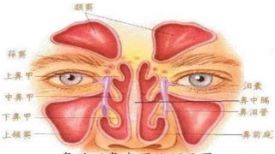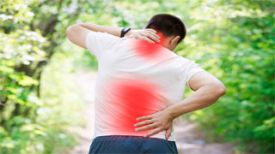Five point support
Low difficulty five point support:
Lie flat on the bed, bend your legs to 90 degrees, use your back muscles to lift your hips off the bed, and apply force to your head, elbows, and heels. Hold for one minute, then let go and rest for one minute. 20 times per group, one group in the morning, one group in the middle, and one group in the evening. If physical strength allows, it can be increased to two groups.
Medium difficulty five point support:
It is necessary to gradually train from low difficulty five point support, and this movement can be practiced after the strength of the lower back muscles is enhanced.
Lie flat on the bed and bend your legs to 105 degrees. Leave your hips off the bed, hold for one minute, and let them rest for one minute. 20 times per group, one group in the morning, one group in the middle, and one group in the evening.
High difficulty five point support:
It is necessary to gradually train with five support points from low to medium difficulty, and after practicing for a period of time, the strength of the lower back muscles can be enhanced before practicing this movement. Lie flat on the bed, straighten your lower limbs, lift your hips off the bed, hold for one minute, and let them rest for one minute. 20 times per group, one group in the morning, one group in the middle, and one group in the evening.
Xiaoyan Feikang Rehabilitation Exercise
Junior Xiaoyanfei:
Place your hands on both sides of your body, lift your head naturally, and hold your chest up. Each action lasts for 1 minute, 20 times per group, with three groups per day. Beginners do not require height, just leave the bed.
High difficulty Xiaoyanfei:
Place your hands on both sides of your body, lift your chest and head up, and leave your feet on the bed surface. Each action lasts for 1 minute, 20 times per group, with three groups per day.
It can be done gradually, from 20 seconds, 30 seconds, 50 seconds, to 60 seconds.
Don't pursue high difficulty, just hit the nail on the head. The principle is that there is no pain after or during the action. If there is pain while doing it, or if it hurts when posing, do not force yourself to practice, there is no need to endure pain during exercise.
Correct sleeping posture for lumbar disc herniation
Correct sleeping posture for patients with lumbar disc herniation. Have a suitable pillow, about one fist high, close to the shoulder, and place the entire head on top. This is a relatively correct supine position. There is no correct posture. When feeling uncomfortable, turn over in a timely manner, find a comfortable position, a comfortable pillow and bed, and good rest can promote the recovery of intervertebral disc herniation.
The best exercise method for lumbar disc herniation
What actions are good for lumbar disc herniation? Lumbar disc herniation. It is not recommended to participate in exercise during the acute phase, but can be done during the chronic phase.
What kind of exercise can hurt your waist? There are no strict restrictions, but no exercise can last too long. Exercising to the best of one's ability is good for the lumbar spine, and exceeding one's physical limits is not good.
Can patients with lumbar disc herniation run and jump rope? Not during the acute phase. The relief period can start with slight movements, and if there is no pain, it is sufficient. It must be done step by step.
Taboos for lumbar disc herniation
What is the most frightening posture for lumbar disc herniation? The correct action is to avoid inducing pain in lumbar disc herniation. When picking up things, bend your knees to squat down and avoid bending down to pick up things. Bending over can induce pain. Normal people can bend down to carry heavy objects, but patients with lower back and leg pain should try to squat down to pick them up.
Correct sitting posture for patients with lumbar disc herniation. If the lumbar spine is not good, try to sit back and lean against the backrest. Find a position that doesn't hurt.
Maintenance of lumbar disc herniation
How do patients with lumbar disc herniation transition from standing to sitting to lying? Stand with your back against the bed, slowly find the bed with your hands, and sit down with the bed supported. After sitting down, sit deeper and fold down towards the pillow, gradually allowing the pillow to support the entire body. Then slowly change from lying on the side to lying on the back. When changing positions, if there is lower back pain when lying on the side or back, adjust the position that cannot find the pain. If not found, surgical treatment is required.
How to alleviate lumbar disc herniation
Release time:2024-05-24 19:21:32
Reading:190
Word Count:4594
Subscribe to email


